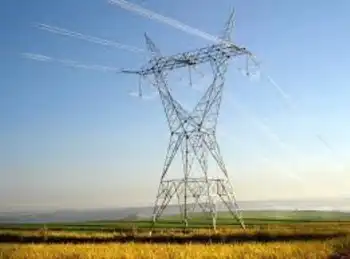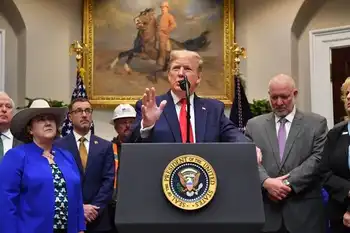China closes 2,000 factories, cuts energy use
The Ministry of Industry and Information Technology quietly published a list of 2,087 steel mills, cement works and other energy-intensive factories required to close by September 30.
Energy analysts described it as significant step toward the countryÂ’s energy-efficiency goals, but not enough by itself to achieve them.
Over the years, provincial and municipal officials have sometimes tried to block BeijingÂ’s attempts to close aging factories in their jurisdictions. These officials have particularly sought to protect older steel mills and other heavy industrial operations that frequently have thousands of employees and have sometimes provided workers with housing, athletic facilities and other benefits since the 1950s or 1960s.
To prevent such local obstruction this time, the ministry said in a statement on its Web site that the factories on its list would be barred from obtaining bank loans, export credits, business licenses and land. The ministry even warned that their electricity would be shut off, if necessary.
The goal of the factory closings is “to enhance the structure of production, heighten the standard of technical capability and international competitiveness and realize a transformation of industry from being big to being strong,” the ministry said.
The announcement was the latest in a series of Chinese moves to increase energy efficiency. The National Development and Reform Commission, which is the governmentÂ’s most powerful economic planning agency, announced recently that it had forced 22 provinces to halt their practice of providing electricity at discounted prices to energy-hungry industries like aluminum production.
The current Chinese five-year plan calls for using 20 percent less energy this year for each unit of economic output than in 2005. But surging production by heavy industry since last winter has put in question ChinaÂ’s ability to meet the target.
The success or failure of ChinaÂ’s energy-efficiency campaign is being watched closely not just by economists, who cite the campaign as one reason that growth of the Chinese economy has slowed down a little this summer, but also by climate scientists.
ChinaÂ’s energy consumption rose so sharply last winter that it produced the biggest surge ever of greenhouse gases by a single country. Power plants burned more coal to generate enough electricity to meet demand.
As China has become increasingly dependent on imported oil and coal, its national security establishment has become more visibly involved in energy policy and energy security, including efforts to improve energy efficiency.
Efficiency improved 14.4 percent in the first four years of the current plan, only to deteriorate by 3.6 percent in the first quarter of this year, according to official statistics. Mr. Wen responded by convening a special meeting of the cabinet in May to address the situation.
Energy efficiency was only 0.09 percent worse in the first half of this year than in the same period in 2009, according to statistics. Energy analysts said those statistics indicated improvement in efficiency in the second quarter that nearly offset the deterioration in the first quarter, although the government has not released separate figures for the second quarter.
Zhou Xizhou, an associate director for IHS Cambridge Energy Research Associates in Beijing, said that the ministry’s new list of factory closings was a strong measure to improve efficiency. But he added that China’s goal of achieving a 20 percent improvement by the end of this year compared with 2005 “is still a tall order for the rest of the year.”
The ministry said in its statement that the factories to be closed would include 762 that make cement, 279 that produce paper, 175 that manufacture steel and 84 that process leather.
The factories were chosen after discussions with provincial and municipal officials to identify industrial operations with outdated, inefficient technology, the ministry said.
The ministry did not provide figures for the percentage of capacity to be closed in each industrial sector. The ministry also did not say how many employees would be affected.
Closing factories is more palatable now than in the past because a labor shortage in many cities has made it easier for workers, particularly young ones, to find other jobs.
The list of steel mills to be closed appeared to emphasize smaller, older mills producing fairly low-end grades of steel. Edward Meng, the chief financial officer of China Gerui Advanced Materials, a steel-processing company in central ChinaÂ’s Henan province, said that the closing of such mills was consistent with the governmentÂ’s broader goals of consolidating the steel sector and pushing steel makers into the production of more sophisticated kinds of steel.
The International Energy Agency in Paris announced that China surpassed the United States last year as the worldÂ’s largest consumer of energy.
China passed the United States as the worldÂ’s largest emitter of greenhouse gases in 2006. That milestone came earlier because of ChinaÂ’s heavy reliance on coal, an especially dirty fossil fuel in terms of emission of gases contributing to global climate change.
In addition to the energy-efficiency objective in the current five-year plan, a plan announced by President Hu Jintao late last year called for China to reduce its carbon emissions per unit of economic output by 40 to 45 percent by 2020, compared with 2005 levels. Carbon emissions are a measurement of a countryÂ’s man-made emissions of greenhouse gases like carbon dioxide.
Even if China meets its energy-efficiency goal this year and its carbon goal by 2020, its total carbon emissions are still on track to rise steeply in the next decade, according to forecasts by the International Energy Agency. That is because of factors including rapid growth in the Chinese economy, growing car ownership and rising ownership of household appliances.
Related News

ATCO Electric agrees to $31 million penalty following regulator's investigation
CALGARY - Regulated Alberta utility ATCO Electric has agreed to pay a $31 million administrative penalty after an Alberta Utilities Commission investigation found it deliberately overpaid a First Nation group for work on a new transmission line, and then failed to disclose the reasons for it when it applied to be reimbursed by ratepayers for the extra cost.
An agreed statement of facts contained in a settlement agreement between ATCO Electric Ltd. and the commission's enforcement staff says the company sole-sourced a contract in 2018 for work that was necessary for an electric transmission line to Jasper, Alta.
The company that won…





